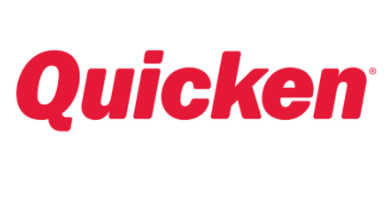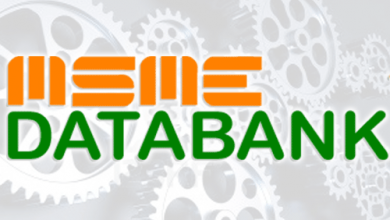How Personal Loans Can Help in Debt Consolidation

Loans are no longer just for big-ticket purchases like buying a house or paying for your children’s education. Customers are increasingly taking out loans to cover their living expenses and pay for small-ticket purchases such as consumer durables. People, particularly those with bad credit scores, are enticed to take several loans at greater interest rates as credit access expands. As a result of the increased EMI burden, they have very little money left over for emergency funds or other important financial goals. If you find yourself in a similar position, the easiest way to get out is to consolidate your multiple loans by taking out personal loans with a lower interest rate and, ideally, a longer repayment period. Furthermore, consolidating your many loans into a single loan would save you the time and effort of keeping track of multiple EMIs, due dates, and so on.
What is debt consolidation?
Debt consolidation is the process of lowering the number of loan accounts in order to save money on high-interest expenses and pay off debts faster.
Debt consolidation, on the other hand, should be carefully arranged. So that the loan(s) with the highest interest rate is repaid with a new loan with the lowest interest rate and best terms.
Why debt consolidation is essential?
- Unsecured debts (debts or loans that aren’t backed by credit or collateral) typically have higher interest rates.
- A bigger amount of unsecured loans in your portfolio, on the other hand, can hurt your credit score.
- Managing many credit card payments and other modest loans obtained for various purposes is difficult.
- Missing payments, defaults, penalties, and a lower credit score increase the likelihood of missing payments, defaults, and subsequent penalties.
- Due to the high-interest rate, you may find it more difficult to pay off the entire balance.
How the personal loans can help in debt consolidation?
Borrowers can consolidate their debt in a variety of ways, including obtaining a top-up loan on an existing loan, obtaining a loan against property, obtaining a loan against assets, and so on. Personal loans are the most common option among these because they do not require collateral. Personal loans also have a speedy approval and disbursement process. Some banks offer pre-qualified/pre-approved loans with immediate disbursement to select customers with good repayment capacity and credit history.
Existing personal loan borrowers who are paying high-interest rates can use the personal loan balance transfer option to move their loan to a new lender with a lower interest rate and a longer-term. Some lenders also provide top-up loans to people who use the balance-transfer option on their personal loans. Borrowers might utilize the money from the top-up loan to pay off other, more expensive loans or achieve other financial objectives.
Single EMI vs Multiple EMI
You can build your own EMI when you combine a single personal loan with your loan. You won’t have to keep track of many EMI dates, and you won’t have to worry if you don’t pay the penalty EMI on time. It is definitely more convenient to pay off a single loan via EMI each month rather than three or four individual EMIs. Personal Loan for Debt Consolidation allows you to combine all of your EMIs into a single EMI and repay your loan, as the name says. A personal loan calculator can be used to evaluate the EMI.
Speedy loan repayment
A personal loan has a fixed EMI and a fixed interest rate for a set period of time It is usually between one and five years. Once you’ve consolidated your debt, you’ll be able to pay it off quickly. It can be done by making a single monthly payment at a fixed interest rate. Because credit cards have no fixed payback period, consumers sometimes miss the reality that interest rates continue to accrue until the amount is repaid.
Here’s how to use personal loans for debt consolidation.
Figure out the amount you need
To figure out how much you’ll need, first calculate your entire outstanding debt. Then subtract the amount you can save by selling your current investments or taking out soft loans from your parents, friends, or other family members. For this aim, choose low-yield investments such as bank fixed deposits or debt funds. Because their rates of return are typically lower than their loan rates.
Before applying for a new loan, check your credit record
Before applying for a new loan, check your credit report to find out your current credit score, identify any inaccuracies, and take any necessary steps to repair them. Customers can get their credit reports for free once a year from credit bureaus. Get your credit report from online lending marketplaces if you want to keep a month-to-month monitor on your credit score from all credit bureaus for free. Obtaining credit reports from such online lending platforms can also assist you in receiving tailored loan offers from their partner banks and NBFCs based on your credit score.
Find the best loan offer
Find the best personal loan offer based on interest rates, tenure, and other factors after you know the loan amount. Inquire about personal loan offers from banks and NBFCs where you already have a deposit and/or loan account. Many lenders offer personal loans with lower interest rates to their existing customers. Then, examine the interest rates on personal loans given by as many lenders as feasible. You can also check with other lenders to see if they have the same offer. However, going to online loan marketplaces is the best way to go about it. Such online lending platforms will enable you to compare personal loan possibilities from multiple lenders. It is based on your credit profile without negatively impacting your credit score.
Pre-pay high-interest loan first
If you can’t consolidate your full existing debt, you’ll have to prioritize your loans according to their interest rates. Those who owe money on their credit cards and loans should pay off their credit cards first. This is due to the higher interest rates (financing costs) associated with credit cards. It typically ranges from 30% to 45 percent p.a., depending on the credit card provider. Furthermore, outstanding credit card balances are subject to late payment fines if the minimum amount due on the credit card statement is not paid, adding to your debt.
Pay EMI’s of new loans regularly
Make regular repayments after paying off your older debts using the profits of the new loan. It helps to avoid penalties and improve your credit score. Also, set up standing instructions in your salary or other major savings account. So that the loan EMI is automatically taken from your account when the due date approaches.





